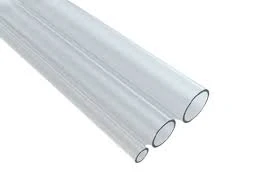ನವೆಂ . 10, 2024 02:46 Back to list
Thermoplastic Welding Rods for Strong and Durable Construction Applications
The Significance of Thermoplastic Welding Rods in Modern Applications
Thermoplastic welding rods play a crucial role in various industries, serving as essential materials for joining thermoplastic components. The ability to bond plastic surfaces efficiently and effectively has revolutionized manufacturing processes, enabling engineers and technicians to produce durable and reliable structures. This article delves into the importance, properties, and applications of thermoplastic welding rods in today’s world.
Understanding Thermoplastic Welding Rods
Thermoplastic welding rods are cylindrical materials made from thermoplastic polymers. These rods are designed to melt under heat and flow into the joint areas of thermoplastic components, ultimately creating a strong bond upon cooling. Common thermoplastic materials used for welding rods include polyethylene, polypropylene, polyvinyl chloride (PVC), and nylon. Each type of rod has distinct characteristics that make it suitable for specific applications.
Properties of Thermoplastic Welding Rods
1. Heat Sensitivity The primary feature of thermoplastic welding rods is their ability to soften when heated. This property allows for ease of application and adaptability to different joining techniques, including extrusion welding, hot air welding, and laser welding.
2. Chemical Resistance Many thermoplastic materials exhibit high resistance to chemicals, making them ideal for industries where exposure to corrosive substances is common. This chemical resistance ensures that the weld remains strong and intact even in harsh environments.
3. Flexibility and Strength The weld created by thermoplastic welding rods is often flexible yet strong. This combination is particularly beneficial in applications where movement or stress is expected, such as in automotive and aerospace components.
4. Ease of Use Thermoplastic welding rods are generally easy to handle and can be used with various welding equipment. This accessibility allows technicians and engineers to complete projects efficiently, saving time and reducing labor costs.
Applications of Thermoplastic Welding Rods
The versatility of thermoplastic welding rods allows them to be utilized across multiple sectors. Some notable applications include
thermoplastic welding rod

1. Automotive Industry In the automotive sector, thermoplastic welding rods are increasingly used for welding plastic components. From interior fittings to bumpers, the ability to create strong and lightweight joints contributes to vehicle performance and safety.
2. Aerospace Applications The aerospace industry requires materials that can withstand extreme conditions while ensuring structural integrity. Thermoplastic welding rods are frequently employed to bond aircraft components, providing reliability and durability.
3. Construction and Infrastructure In construction, these welding rods play a pivotal role in the assembly of plastic components such as piping, insulation, and panels. The chemical resistance and weatherproofing capabilities of thermoplastic materials make them ideal for use in various environmental conditions.
4. Consumer Goods Many consumer products, including containers, toys, and furniture, leverage thermoplastic welding rods for assembly. This method ensures that items are not only aesthetically pleasing but also strong and long-lasting.
5. Medical Devices The medical field also benefits from thermoplastic welding technologies. Devices that require sterilization must be constructed from materials that can withstand high temperatures. Thermoplastic welding rods provide a practical solution for creating hygienic and reliable medical equipment.
Future Trends and Innovations
As technology advances, the development of thermoplastic welding rods continues to evolve. Innovations in materials science are leading to the creation of new polymers with enhanced properties, such as improved heat resistance and higher tensile strength. Additionally, the integration of automation and robotics in welding processes is streamlining production and ensuring precision, making thermoplastic welding even more efficient.
Furthermore, the growing emphasis on sustainability is prompting manufacturers to explore eco-friendly thermoplastic options. Biodegradable polymers and recyclability are becoming important considerations, aligning with global efforts to reduce environmental impact.
Conclusion
Thermoplastic welding rods are indispensable in modern manufacturing, providing effective solutions for joining plastic components across various industries. Their remarkable properties, ease of use, and versatile applications underline their significance in creating durable and high-quality products. As innovations continue to emerge, the future of thermoplastic welding is poised for growth, promising even greater efficiency and sustainability in material bonding processes. Understanding the role and potential of thermoplastic welding rods is essential for professionals in engineering and manufacturing sectors as they strive to meet the demands of an ever-evolving market.
-
HDPE Natural Sheet: Durable, Food-Grade & Versatile Plastic Solutions
NewsAug.27,2025
-
Durable Glossy PVC Rigid Sheet | Premium High-Shine Panels
NewsAug.26,2025
-
Durable PP Rigid Sheet: Lightweight, Chemical Resistant Solutions
NewsAug.21,2025
-
PVC Grey Sheet for Extraction: Chemical Resistant & Durable
NewsAug.19,2025
-
Durable PVC Pipe Fittings for Plumbing & Irrigation Needs
NewsAug.18,2025
-
HDPE Steel Belt Reinforced Spiral Corrugated Pipe | High Strength
NewsAug.17,2025

